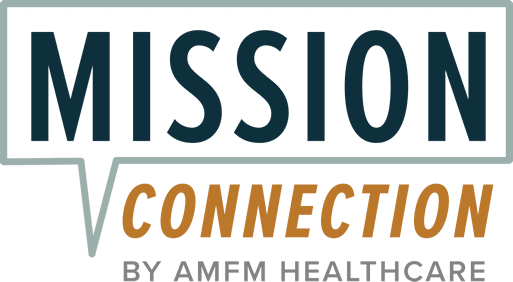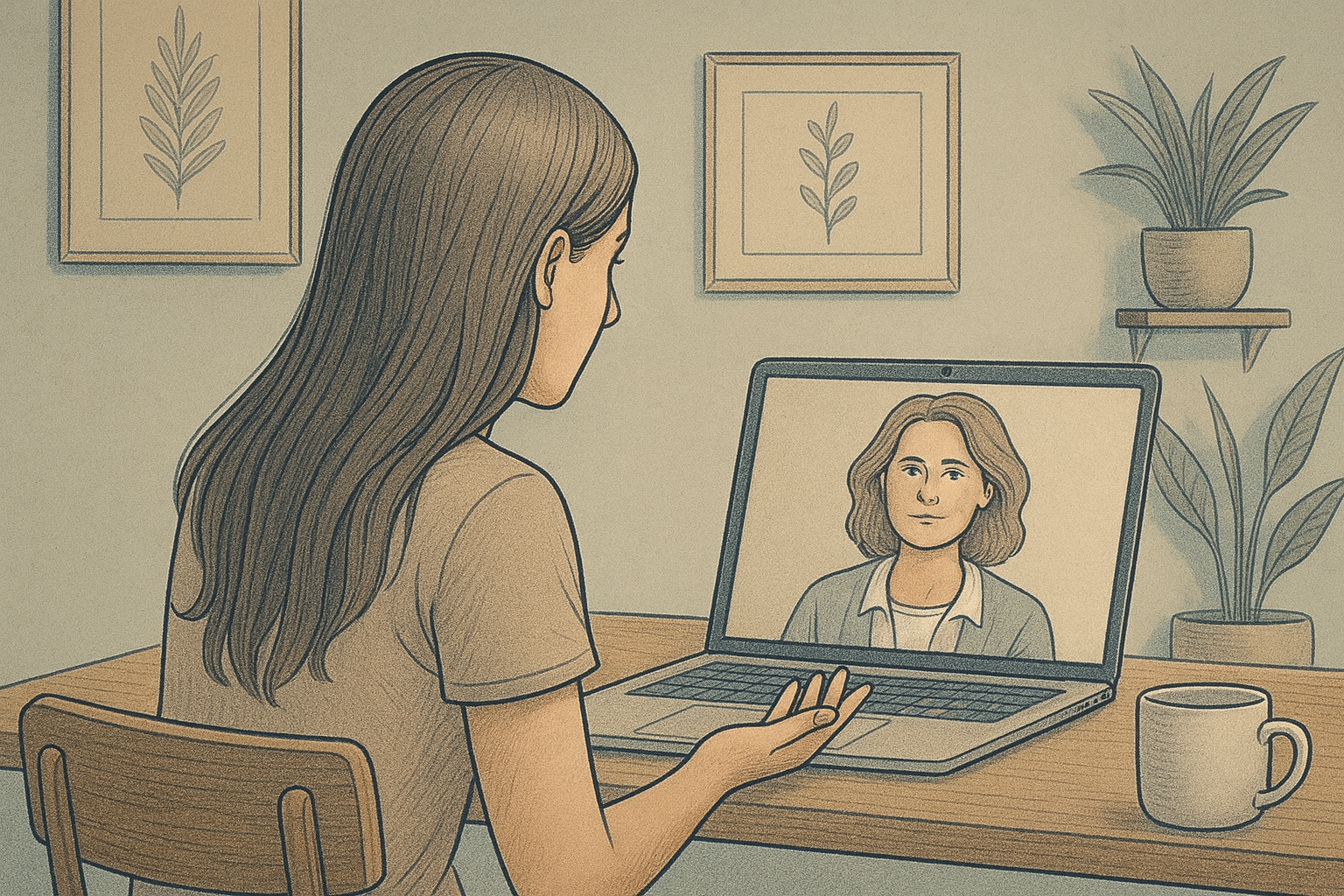
Key Takeaways
- Telehealth therapy offers comparable effectiveness to in-person therapy for many mental health conditions while providing greater accessibility and convenience.
- In-person therapy maintains advantages for severe mental health conditions, crisis situations, and for clients who prefer face-to-face connection.
- While session costs may be similar, telehealth can reduce overall expenses by eliminating travel time, transportation costs, and childcare needs.
- The ideal therapy format depends on individual preferences, technology comfort, privacy needs, and the specific mental health condition being treated.
- Mission Connection offers both telehealth and in-person therapy options with flexible scheduling, allowing clients to choose the format that best fits their lifestyle and therapeutic needs.
Which Is Better for Mental Health: Telehealth or In-Person Therapy?
When comparing effectiveness, both telehealth and in-person therapy have proven their worth. The question isn’t necessarily which is universally “better,” but rather which format aligns with your specific situation and needs.
Factors like your diagnosis, lifestyle constraints, personal preferences, and access to resources all play crucial roles in determining the ideal approach.
The truth is that therapy effectiveness depends largely on the therapeutic relationship and your commitment to the process, regardless of the delivery method.
Many individuals find they can develop meaningful connections with their therapists through either format, though the experience differs in important ways.
| Mission Connection: Outpatient Mental Health Support Mission Connection offers flexible outpatient care for adults needing more than weekly therapy. Our in-person and telehealth programs include individual, group, and experiential therapy, along with psychiatric care and medication management. We treat anxiety, depression, trauma, and bipolar disorder using evidence-based approaches like CBT, DBT, mindfulness, and trauma-focused therapies. Designed to fit into daily life, our services provide consistent support without requiring residential care. Start your recovery journey with Mission Connection today! |
Telehealth Therapy: How It Works and Who It Helps
Telehealth therapy connects you with licensed mental health professionals through secure video platforms, phone calls, or messaging systems. This approach removes geographical barriers and offers unprecedented flexibility for scheduling sessions around work, family, and other commitments.
The convenience of telehealth therapy extends beyond just saving travel time. You can access quality mental health care from environments where you already feel comfortable, which some individuals find reduces the anxiety associated with therapy.
Available Platforms and Technology Requirements
Today, there’s numerous HIPAA-compliant platforms designed specifically for mental health care. The technology requirements for effective telehealth therapy are surprisingly minimal.
You’ll need a device with a camera and microphone (smartphone, tablet, or computer), a stable internet connection, and a private space for your sessions. Many platforms also work with basic headphones to improve audio quality and enhance privacy.
Treatment Effectiveness of Virtual Care
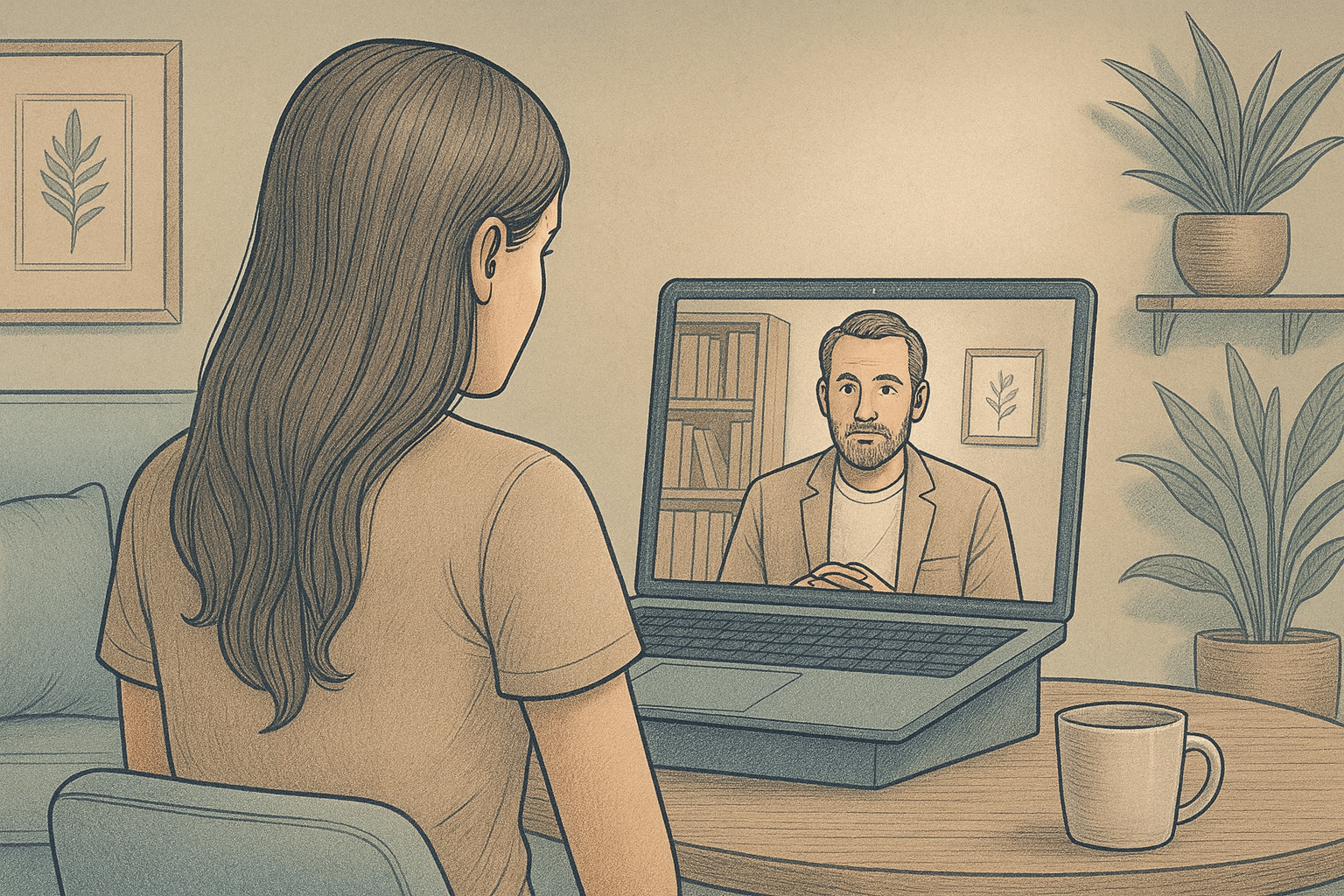
Research shows that anxiety disorders, depression, PTSD, and adjustment disorders respond particularly well to virtual treatment approaches.
Cognitive Behavioral Therapy (CBT), one of the most evidence-based therapeutic approaches, translates effectively to the telehealth format, leading to it being highly effective in treating various mental health conditions.
Privacy Considerations and HIPAA Compliance
Privacy remains a critical concern in telehealth therapy. Reputable telehealth providers use end-to-end encryption and HIPAA-compliant platforms to protect your sensitive information.
However, you’ll need to take additional steps to ensure privacy on your end, such as finding a quiet, private space where conversations won’t be overheard and using secure, password-protected internet connections.
In-Person Therapy: Traditional Benefits in Modern Times
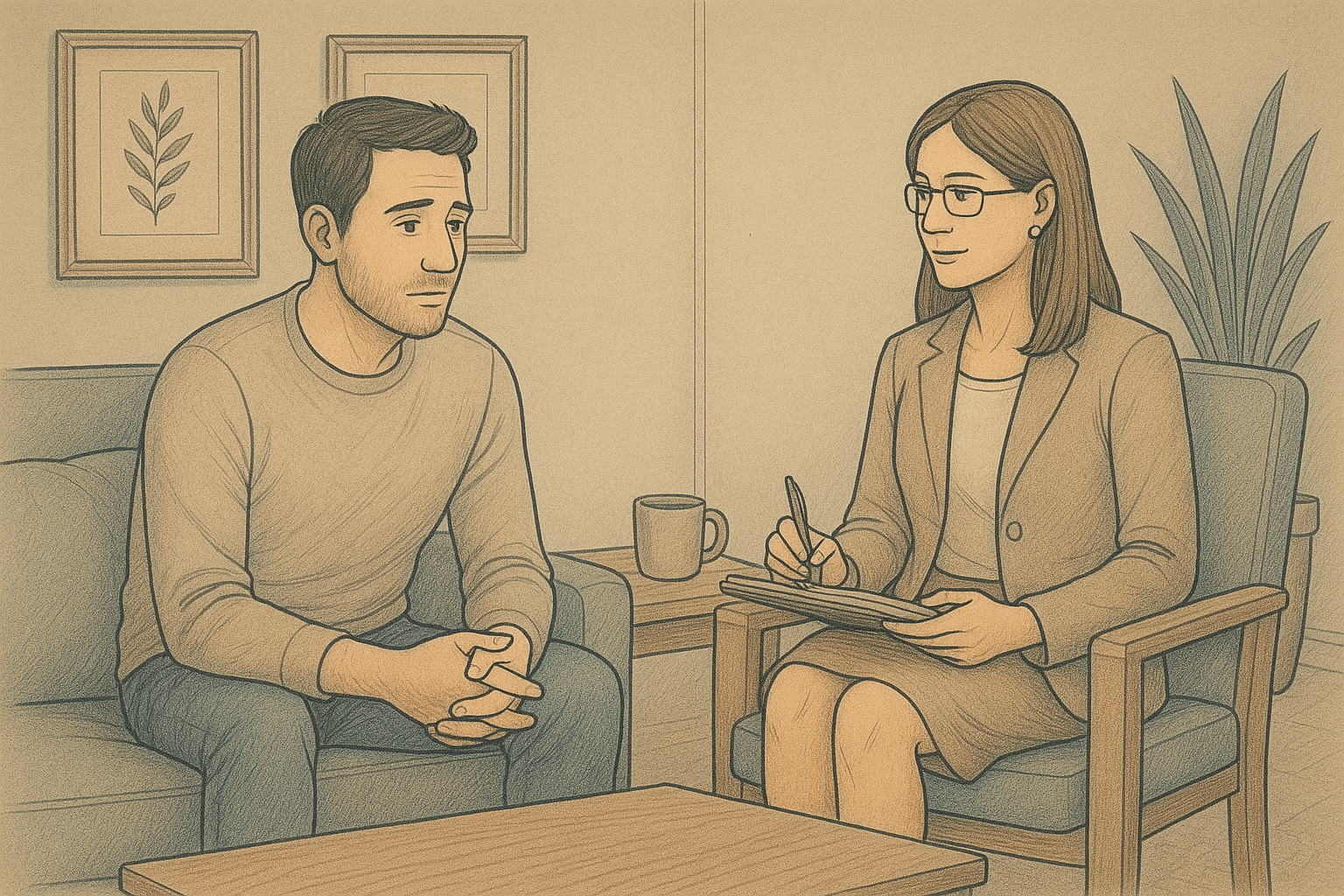
Face-to-face interaction allows therapists to observe subtle non-verbal cues like body language, micro-expressions, and physical responses that might be missed on video.
This comprehensive view can provide valuable clinical insights and inform treatment approaches. The physical office environment also provides a dedicated space for therapeutic work, free from the distractions and associations of home.
Many individuals appreciate this clear boundary between therapy and everyday life, finding it helps them focus more deeply on their therapeutic process.
The Pros of Physical Presence
Human connection often feels different in person than through screens. The shared physical space of traditional therapy creates opportunities for genuine connection that some clients and therapists find more conducive to building trust.
Physical presence also enables certain therapeutic techniques that rely on in-person interaction. Somatic therapies, EMDR (Eye Movement Desensitization and Reprocessing), play therapy for children, and certain experiential approaches may be more effectively delivered face-to-face, though adaptations for telehealth continue to evolve.
Effectiveness of Face-to-Face Sessions
In-person therapy is typically more effective in treating individuals experiencing severe mental health conditions, including acute crises, psychosis, or active suicidal ideation.
The immediate support and intervention possible in a face-to-face setting can be crucial during these challenging times. Your therapist can directly observe your state and respond appropriately in real-time.
Office Environment Advantages
Therapy offices are designed with psychological comfort and confidentiality in mind. Sound-proofed rooms, professional environments, and the absence of household distractions create ideal conditions for deep therapeutic work.
For those who lack privacy at home or find it difficult to establish boundaries with family members, the therapy office provides a reliable sanctuary.
Detailed Comparison: What You Should Know
| Feature | Telehealth Therapy | In-Person Therapy |
| Effectiveness | Comparable to in-person therapy for many mental health conditions | Gold standard for severe conditions, crises, and complex cases |
| Accessibility & Convenience | Greater accessibility; removes travel, transportation, childcare issues | Requires physical presence; may be challenging for some clients |
| Cost Considerations | Similar session fees; reduces indirect costs like travel and time off work | Similar session fees; additional costs for travel, parking, childcare |
| Therapist-Client Connection | Effective therapeutic relationships can be developed virtually | Stronger non-verbal cues and physical presence for rapport building |
| Suitability for Conditions | Well suited for anxiety, depression, PTSD, adjustment disorders | Preferable for severe mental illness, trauma-focused therapies |
| Privacy & Environment | Requires private, quiet space and secure internet | Safe, distraction-free office environment |
| Technology Requirements | Device with camera & microphone, stable internet | None |
| Flexibility | High flexibility in scheduling and location | Fixed appointment locations and times |
| Ideal For | Rural/remote clients, mobility limitations, busy schedules | Clients preferring face-to-face interaction, complex therapeutic needs |
| Insurance Coverage | Widely accepted, often with parity to in-person | Widely accepted |
True Cost Comparison Beyond the Session Fee
Direct Therapy Costs
Session fees for telehealth and in-person therapy are often identical when seeing the same provider. However, some online therapy platforms offer subscription models that can reduce per-session costs, particularly for frequent sessions.
These platforms sometimes provide additional resources like messaging support between sessions, which can add value beyond traditional therapy models.
The significant cost differences appear when considering indirect expenses. In-person therapy requires transportation costs (gas, parking, public transit fares), potential childcare expenses, and the economic impact of time spent traveling to and from appointments.
For individuals with hourly work arrangements, taking time off for therapy appointments can directly impact income.
Insurance Coverage Differences
Insurance coverage for telehealth therapy has expanded dramatically, particularly since the COVID-19 pandemic. Many insurance providers now cover telehealth therapy sessions at the same rate as in-person visits, though policies vary.
Some temporary coverage expansions implemented during the pandemic have become permanent, reflecting the growing recognition of telehealth’s effectiveness.
When evaluating costs, check your specific insurance policy details regarding telehealth coverage.
Mission Connection: Your Partner in Flexible Mental Healthcare
The choice between telehealth and in-person therapy doesn’t have to be permanent or limiting. At Mission Connection, we understand that effective mental healthcare must adapt to your life, not the other way around. Our comprehensive outpatient program offers both telehealth and in-person options, allowing you to access quality care when, where, and how it works best for you.
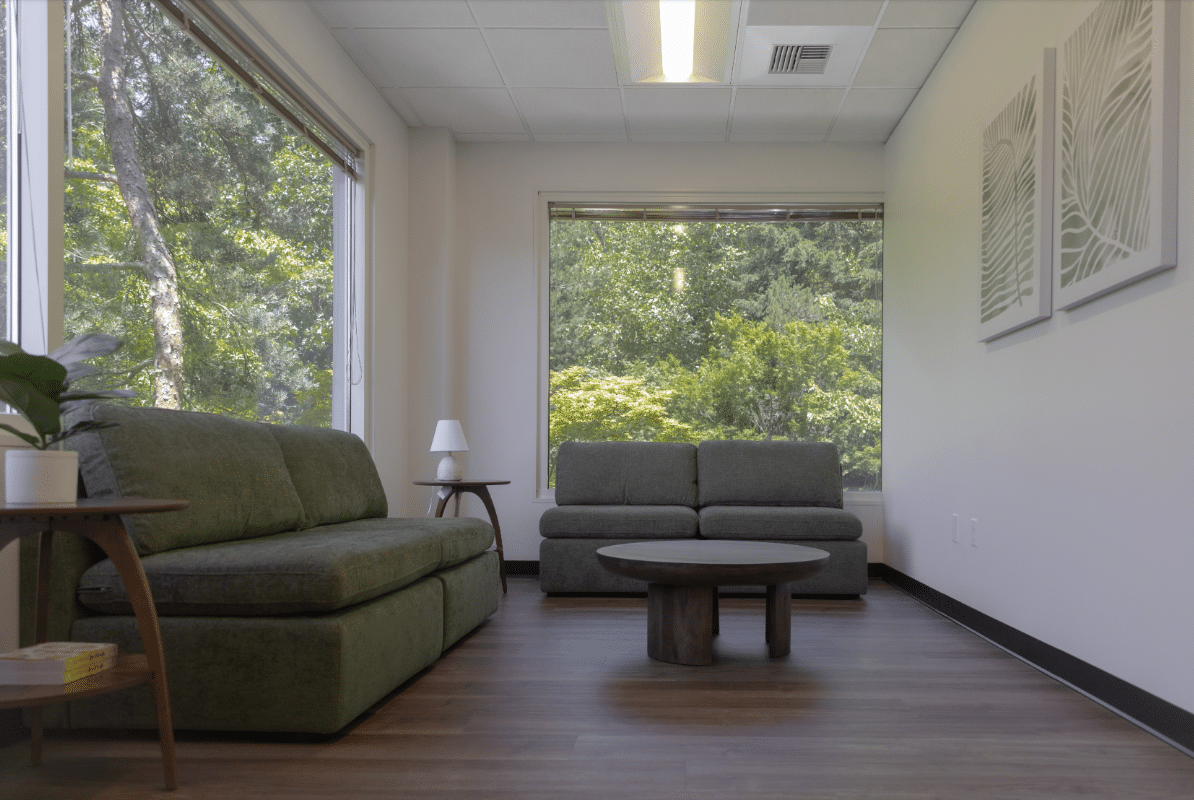
Our licensed therapists and clinicians deliver the same evidence-based treatments, including CBT, DBT, and mindfulness-based approaches, no matter if you’re in our office or connecting from home. With many of our clients expressing satisfaction with their care, we’ve proven that flexibility doesn’t mean compromising on quality. Our hybrid model ensures continuity of care, so you can seamlessly transition between formats as your needs change.
If you’re managing anxiety, depression, or other mental health challenges, Mission Connection provides the personalized support you deserve. Our multidisciplinary team offers daily group therapy, weekly individual sessions, and psychiatric care, all designed to fit your schedule and lifestyle. Take the first step toward lasting healing with a provider that truly meets you where you are.
Frequently Asked Questions
Is telehealth therapy as effective as in-person sessions?
Research shows telehealth therapy is equally effective as in-person treatment for many common mental health conditions, including anxiety, depression, and PTSD. The therapeutic relationship can develop successfully through both formats.
How much does telehealth therapy cost compared to in-person sessions?
Session fees are typically similar, but telehealth eliminates additional costs like transportation, parking, and time off work, making it often more economical overall.
What technology do I need for telehealth therapy?
You need a device with a camera and microphone (smartphone, tablet, or computer), stable internet connection, and a private space. Most platforms are user-friendly and HIPAA-compliant.
Can I switch between telehealth and in-person therapy?
Many providers offer hybrid models allowing you to combine both formats based on your changing needs, schedule, or therapeutic goals.
Does Mission Connection offer both telehealth and in-person therapy options?
Yes, Mission Connection provides flexible clinical programming with both telehealth and in-person services. Our hybrid model allows you to access licensed therapists, group therapy, and psychiatric care through the format that works best for your schedule and lifestyle, with high client satisfaction rates.
